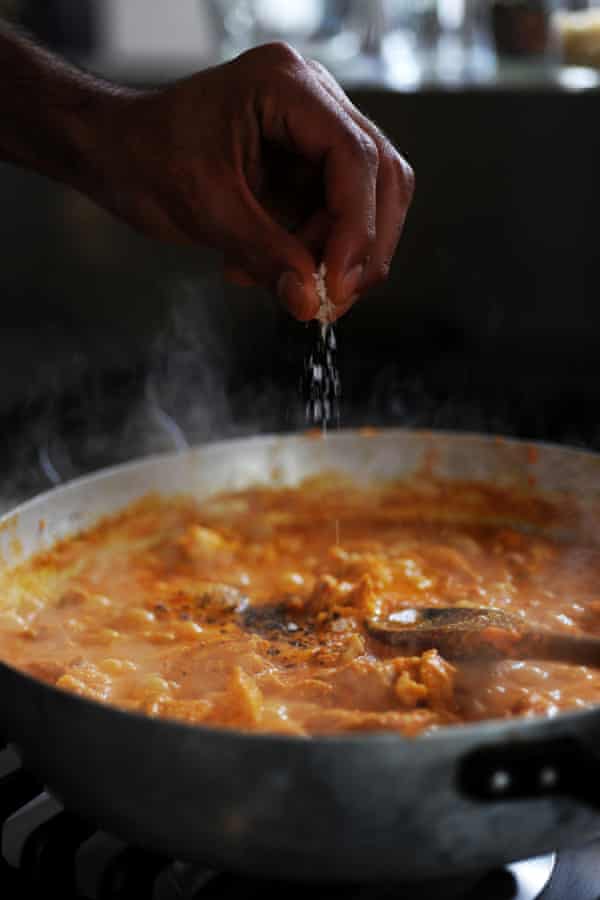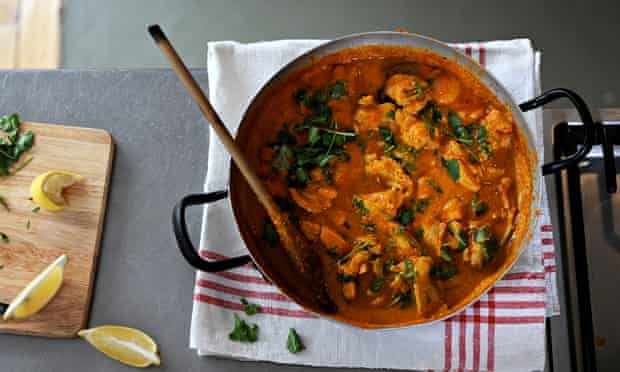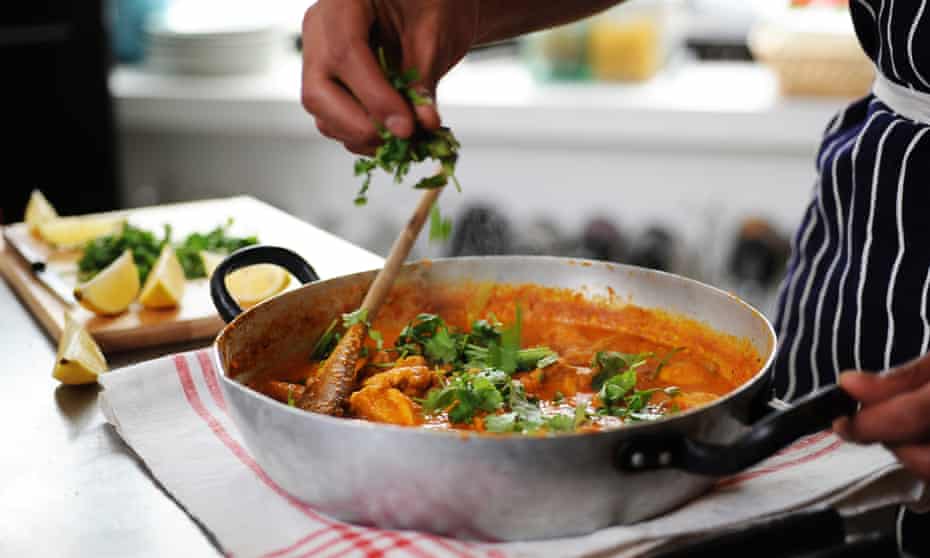The most thrilling moment in the study of any subject comes when you realise that what seems an impossibly complicated discipline is in fact underpinned by a few simple principles. It’s like that moment when Keanu Reeves learns to read the Matrix. A sudden, exhilarating rush of clarity.
The novice piano player experiences it when realising that you only need to learn four chords – E, B, C# minor and A – to play almost all your favourite pop songs. (Lou Reed thought you could narrow it down further. “One chord is fine. Two chords is pushing it,” he said. “Three chords and you’re into jazz.”)

It happened to me for the first time when, shortly before my A-level physics exam, I realised that you could deduce the answers to any question from just five equations. And I had the same experience recently when being taught to make curry in a small kitchen in a house near Luton by Mamta Gupta, who was helping us develop a curry dish for Leon.
Mamta is a master of Indian home cooking and something of an internet phenomenon. She started a recipe blog in 2001, encouraged by her daughters who wanted to use her recipes when they left home (mamtaskitchen.com). But this treasure trove of sound advice soon found a wider audience – it has had more than 15m hits with more, interestingly, coming from India than from the UK.
Mamta’s principles of curry-making are:
Principle 1: Be generous with your spices. Spices not only bring flavour but texture to dishes. Most supermarkets sell spices in misleadingly small containers. You can buy bigger packets from Asian supermarkets, which will encourage you to spoon in the spices with a freer hand. (You can store them in the freezer to stop them going stale.)
Principle 2: Decide how you are going to cook your onion, ginger, and garlic. This triumvirate provides the deep base flavour of most curries, equivalent to onion, carrot and celery in the French tradition. (NB: garlic is not essential. Some Indians eschew it completely on account of its pungency and it is often left out of food served at weddings to avoid offending guests.) Soften them without colouring for a lighter curry (as in the first recipe) or cook them longer and caramelise (as in the second) for something richer and darker.
Principle 3: Decide what is going to give your curry sauce its body. This will normally be one, or a combination, of the following: tomatoes; pureed peppers or chillies; yoghurt or cream; coconut milk; spinach, or finely diced or pureed onion.
Bear these principles in mind, and curry-making will become simple and pleasurable. You will be free to improvise. You will become the master of your very own curry matrix.
Simple chicken and red pepper curry
This was inspired by a recipe in Madhur Jaffrey’s Indian Cookery book. You can make the paste spicy by adding various types of chilli. My collaborator Jane Baxter’s son David demands that she cook it on a weekly basis.

Preparation time: 10 mins
Cooking time: 35 mins
Serves 4
For the red pepper paste
2 red peppers, deseeded and roughly chopped
½ red onion, roughly chopped
1 x 2cm cube ginger, chopped
5 garlic cloves, crushed
1 tsp ground coriander
2 tsp ground cumin
½ tsp turmeric
70g flaked almonds
A pinch of cayenne
Optional if you want to make it spicy: dried chilli flakes, red chillies, smoked paprika
For the sauce
1 tbsp sunflower oil
8 skinless and boneless chicken thighs cut into 2 or 3 pieces
300ml chicken stock
Juice ½ lemon
Salt and pepper
Fresh coriander, chopped
1 Place all the paste ingredients, with a good pinch of salt, in a food processor or liquidiser and blitz until you have a smooth paste.
2 Heat the oil in a large heavy-based pan or shallow frying pan until hot. Tip in the paste ingredients and fry over a medium heat for 10 minutes, stirring occasionally.
3 Add the chicken pieces, season well and cook for another 10 minutes, turning the chicken over in the paste. Add enough stock to make a thick sauce, and bring up to the boil. Turn the heat down to low and simmer uncovered for another 15 minutes.
4 To finish, add a squeeze of lemon, sprinkle of coriander and check it is seasoned well. Serve with plain boiled rice.
What else you can do
Make a veggie curry by frying the paste and cooking various veggies – for example sweet potato and cauliflower – in it. Add a few cooked tinned pulses to complete the dish.
The cooked paste makes a great warm dressing for boiled or steamed French and runner beans, cauliflower or purple sprouting broccoli.
Recipe by Jane Baxter
Mamta’s tomato curry sauce
Adapted from mamtaskitchen.com
Serves 4
2 medium size onions, peeled and roughly chopped
1cm piece of ginger, peeled
2-3 garlic cloves (optional), peeled
2 medium tomatoes, finely chopped or 200g tinned tomatoes. tomatoes
2-3 tbsp cooking oil
1 tsp cumin seeds
A small pinch of asafoetida (optional)
½ tsp turmeric powder (too much makes the curry bitter)
¼ tsp chilli powder (or more or less according to your tastes)
1½ tsp coriander powder
Salt, to taste
½ tsp garam masala
2 tbsp chopped fresh coriander leaves
1 Wash, then grind, blend, chop, or grate the onions, ginger and garlic, if using.
2 Heat the oil in a pan, add the cumin and asafoetida powder, if using. . Let the seeds splutter.
3 Add the onion, ginger and garlic. Fry until golden to medium-dark brown (not burnt).
4 Add all the powdered spices, except the garam masala, and stir for 10 seconds, to release flavours. Add the tomatoes and stir-fry until the oil separates from the mass. (Professionals will add a tsp water now and stir-fry again until the oil separates again.)Finally, stir in the garam masala, then the salt and chillies, to taste. Remember this curry sauce has to be added to the main curry ingredients, so it has to be stronger at this stage than the finished curry.
5 The sauce can be cooled and kept in the fridge or freezer at this point. Simply stir fry the meat or vegetables you want in your curry and then add the sauce and a little extra water if necessary when cooking it. Finish it with some lemon juice and fresh coriander, plus a sprinkle of garam masala.
Henry Dimbleby is co-founder of the natural fast-food restaurant chain Leon (@henry_leon).
